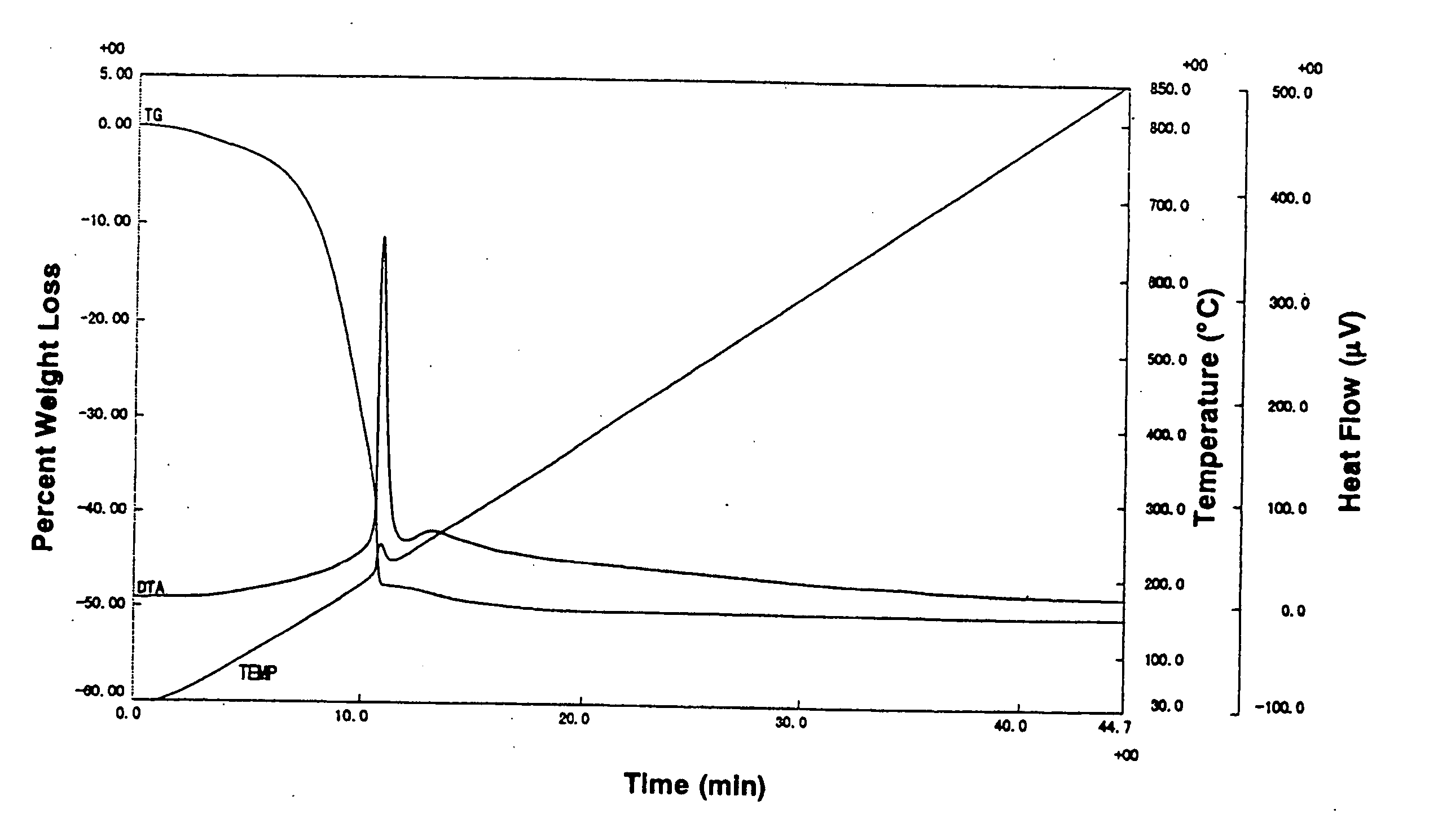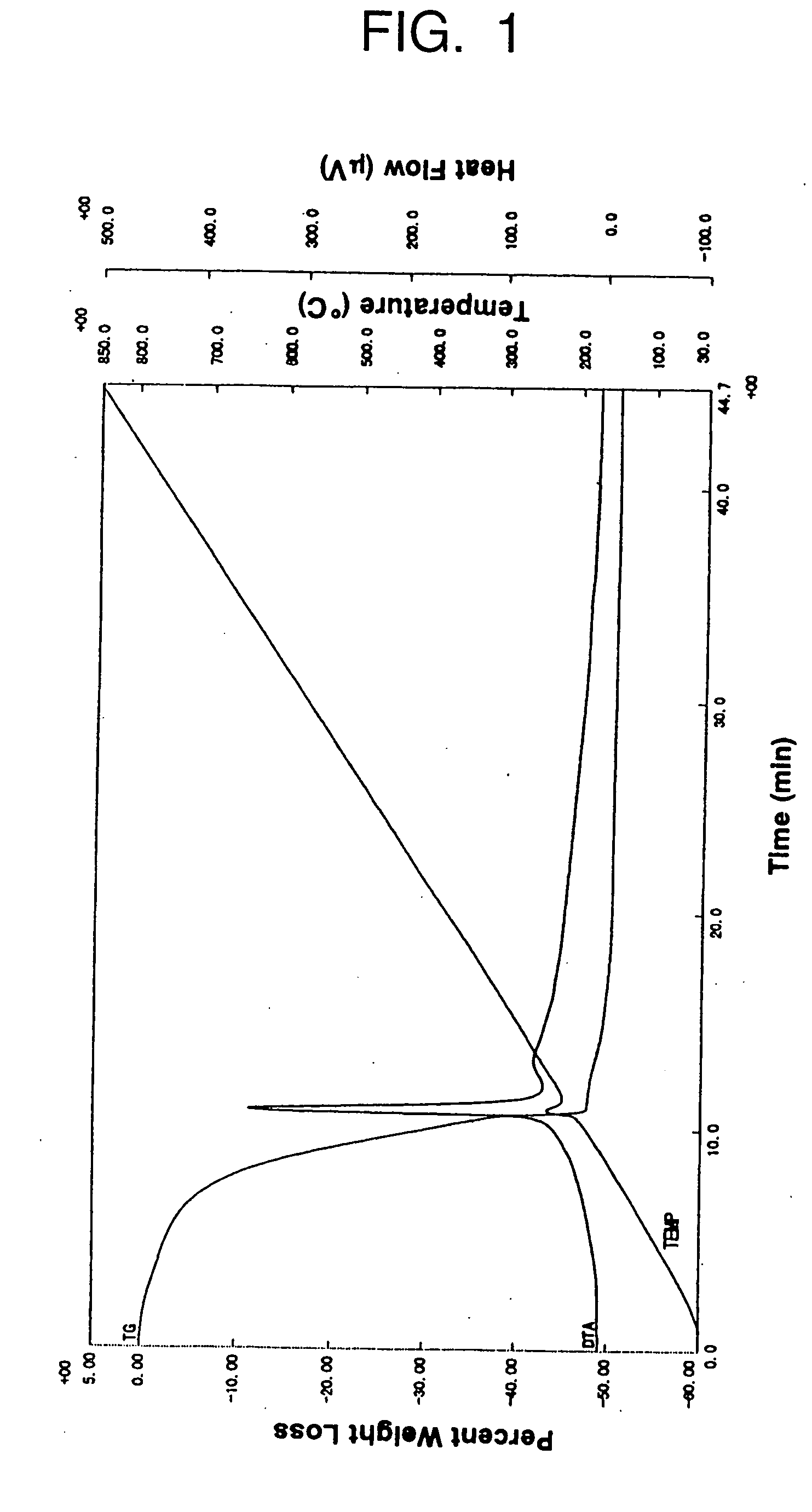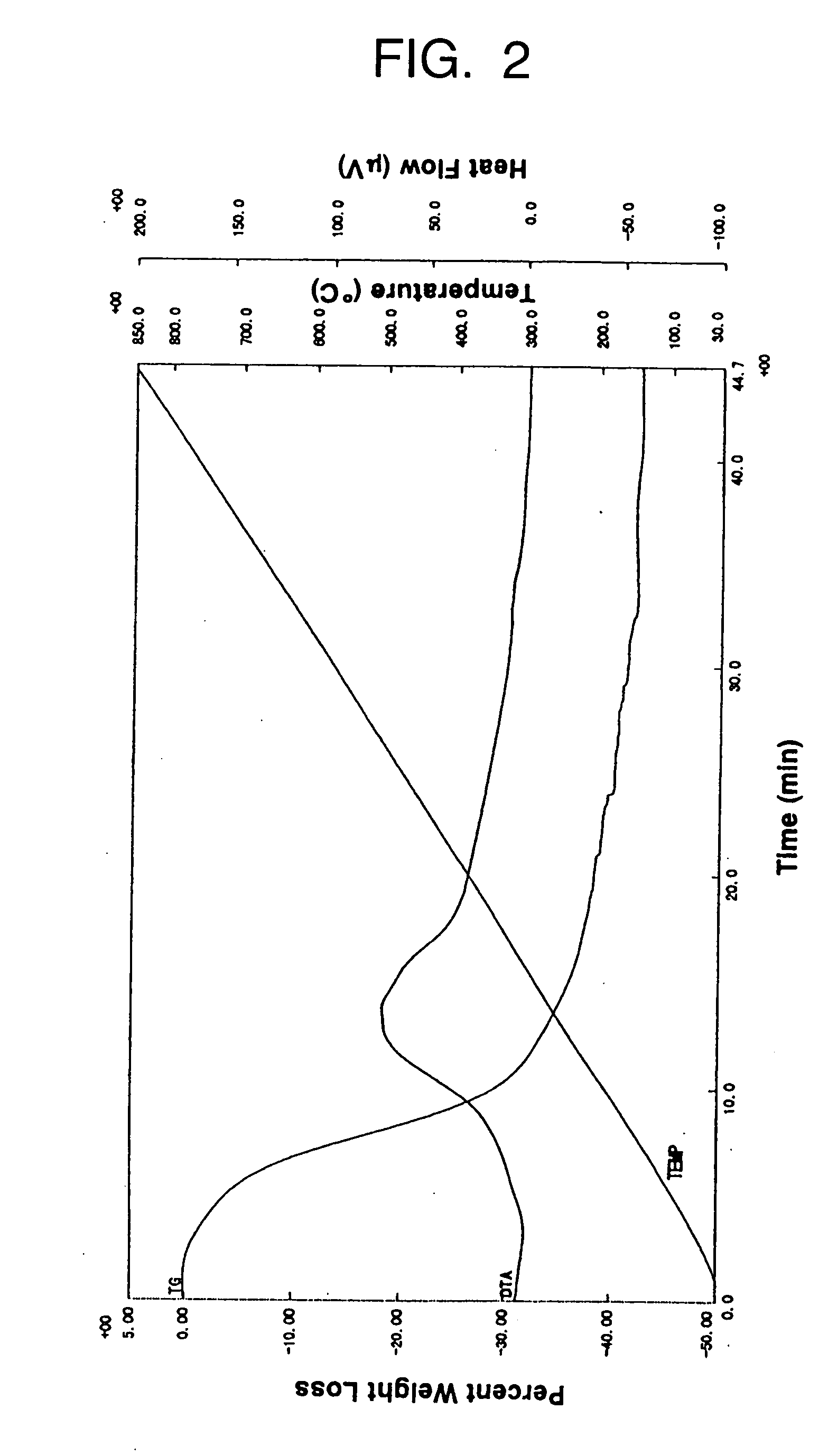Coating solutions for use in forming bismuth-based ferroelectric thin films and a method of forming bismuth-based ferroelectric thin films using the coating solutions
a technology of coating solutions and ferroelectric thin films, which is applied in the direction of liquid/solution decomposition chemical coating, lignin derivatives, organic chemistry, etc., can solve the problems of increasing the chance of thermal damage to ic circuits and substrates, and not being suitable for practical applications, and achieves rapid conversion and small weight loss
- Summary
- Abstract
- Description
- Claims
- Application Information
AI Technical Summary
Benefits of technology
Problems solved by technology
Method used
Image
Examples
example 1
Evaluation of TG Curves
[0142] The coating solutions prepared in Syntheses 1-11 and Comparative Syntheses 1-6 were heated at a rate of 20° C. / min to remove the solvent; after cooling down to 20° C., the coating solutions were again heated at a rate of 20° C. / min to determine TG (thermogravimetric) curves. The TG curves for coating solutions 1-11 are shown in FIGS. 1-11 and those for comparative coating solutions 1-6 are shown in FIGS. 12-17. In FIGS. 1-17, curves labelled TEMP show the temperature (° C.) of the as-applied coat.
[0143] By comparing FIGS. 1-11 with FIGS. 12-17, one can see that coating solutions 1-11 had low enough decomposition temperatures for the organic components that they were converted to inorganic nature within short periods whereas they lost weight by only about 25-45% after decomposition of the organic components. It is clear from FIG. 13 that comparative coating solution 2 using 2-ethylhexanoic acid suffered a significant weight loss of about 60%.
example 2
Evaluation of XRD Analyses
[0144] The coating solutions prepared in Syntheses 1-3, 5 and 9 were whirl coated on silicon wafers with a spinner and dried at 80° C. for 3 minutes to form dry coats 60 nm thick. The same procedure was further repeated twice to form dry coats 180 nm thick.
[0145] The coatings were heated up to 700° C. at a rate of 100° C. / s and heat treated at the same temperature for 1 minute to form Bi-based ferroelectric thin films. The XRD curves for coating solutions 1-3, 5 and 9 are shown in FIGS. 18-22, respectively, and the XRD curve for comparative coating solution 1 is shown in FIG. 23.
[0146] Judging from the peak intensities for 2θ values of about 29°, 33° and 48° in FIGS. 18-23, the ferroelectric films formed from coating solutions 1-3, 5 and 9 had good crystallinity in the substantial absence of the fluorite structure whereas the ferroelectric film formed from comparative coating solution 1 had only poor crystallinity since it partly included the fluorite st...
example 3
Evaluation of Film Quality by SEM
[0147] The coating solutions prepared in Synthesis 1 and Comparative Synthesis 1 were whirl coated on silicon wafers with a spinner and dried at 50° C. for 5 minutes, then heated at 500° C. for 30 minutes to form dry coats 60 nm thick.
[0148] The same procedure was further repeated twice, and then a heat treatment was performed at 750° C. for 60 minutes to form Bi-based ferroelectric thin films 180 nm thick.
[0149] A SEM of the ferroelectric thin film formed from coating solution 1 is shown in FIG. 24, and a SEM of the ferroelectric thin film formed from comparative coating solution 1 is shown in FIG. 25. As is clear from comparison between FIGS. 24 and 25, the ferroelectric thin film formed from coating solution 1 had high quality since it consisted of fine crystal grains that produced a dense structure with a limited number of voids.
PUM
| Property | Measurement | Unit |
|---|---|---|
| temperature | aaaaa | aaaaa |
| temperature | aaaaa | aaaaa |
| temperature | aaaaa | aaaaa |
Abstract
Description
Claims
Application Information
 Login to View More
Login to View More - R&D
- Intellectual Property
- Life Sciences
- Materials
- Tech Scout
- Unparalleled Data Quality
- Higher Quality Content
- 60% Fewer Hallucinations
Browse by: Latest US Patents, China's latest patents, Technical Efficacy Thesaurus, Application Domain, Technology Topic, Popular Technical Reports.
© 2025 PatSnap. All rights reserved.Legal|Privacy policy|Modern Slavery Act Transparency Statement|Sitemap|About US| Contact US: help@patsnap.com



